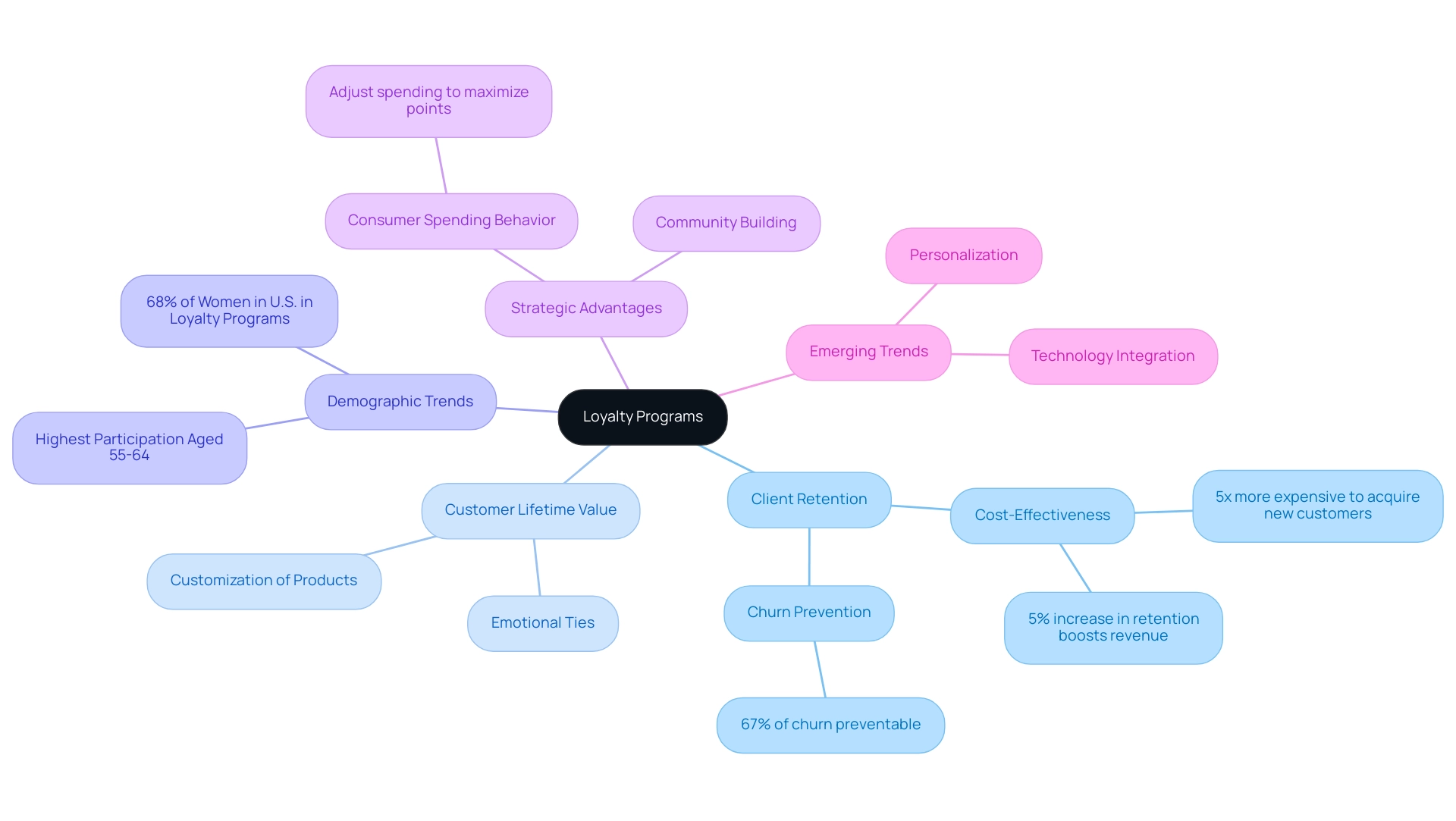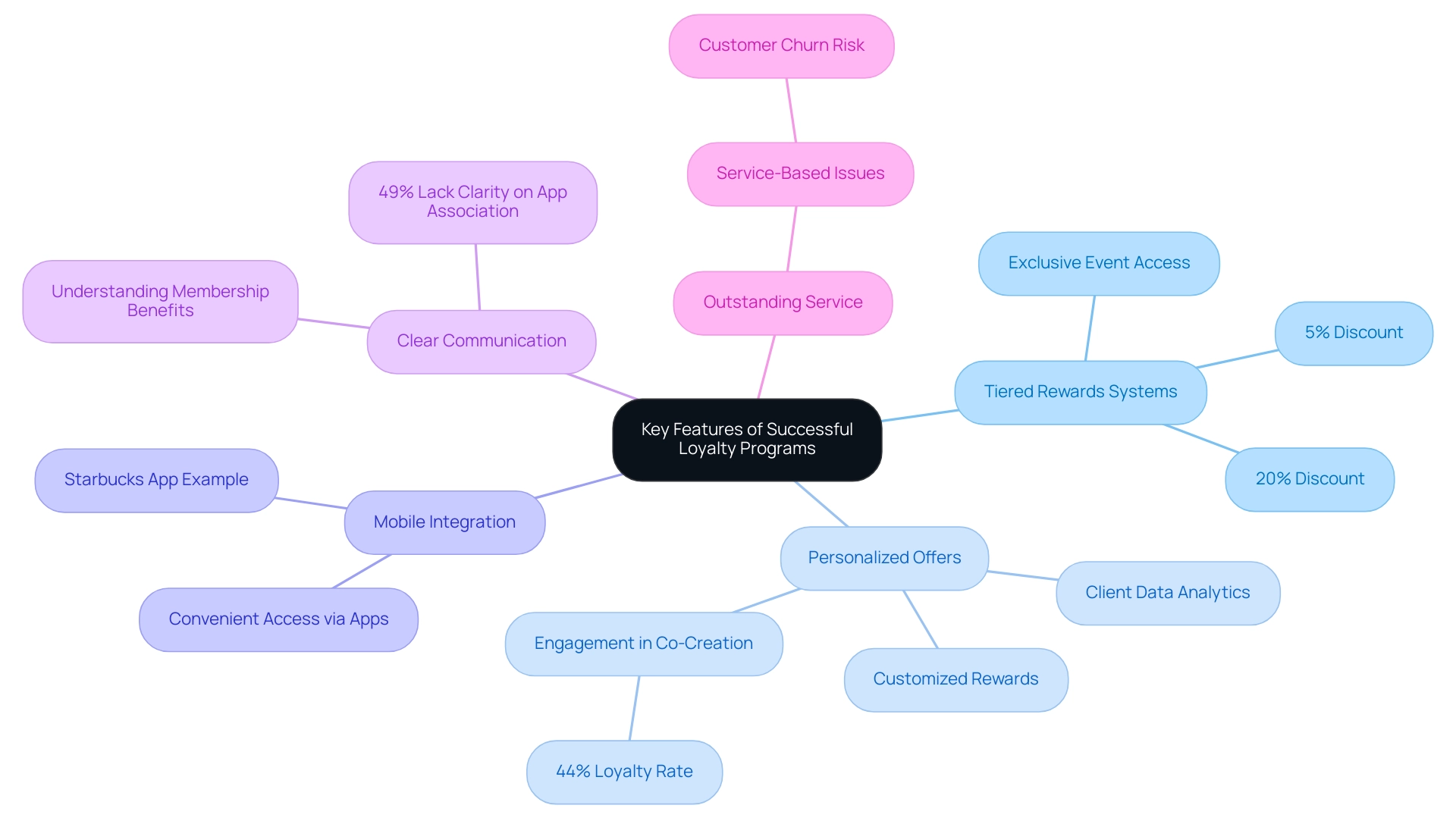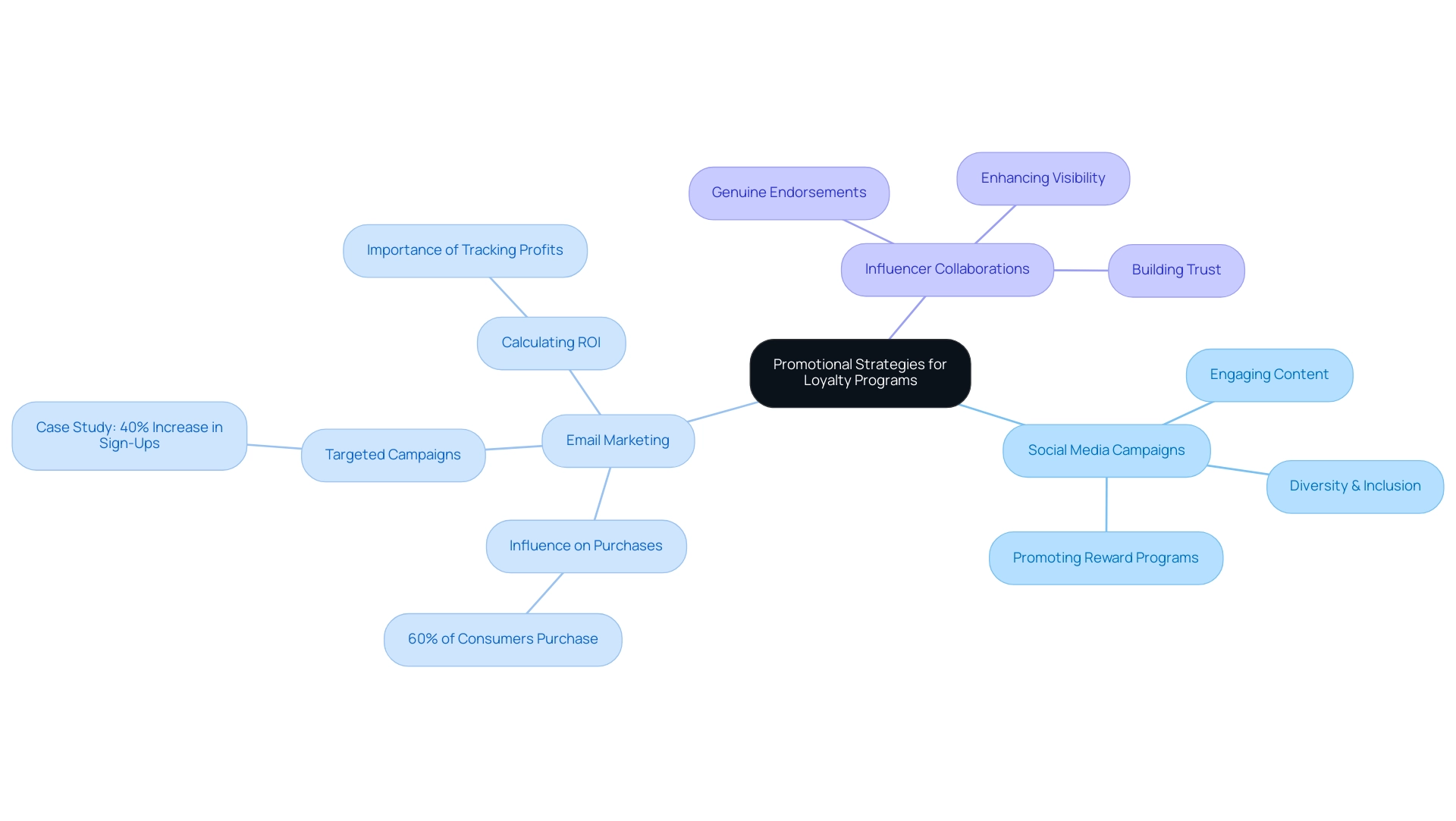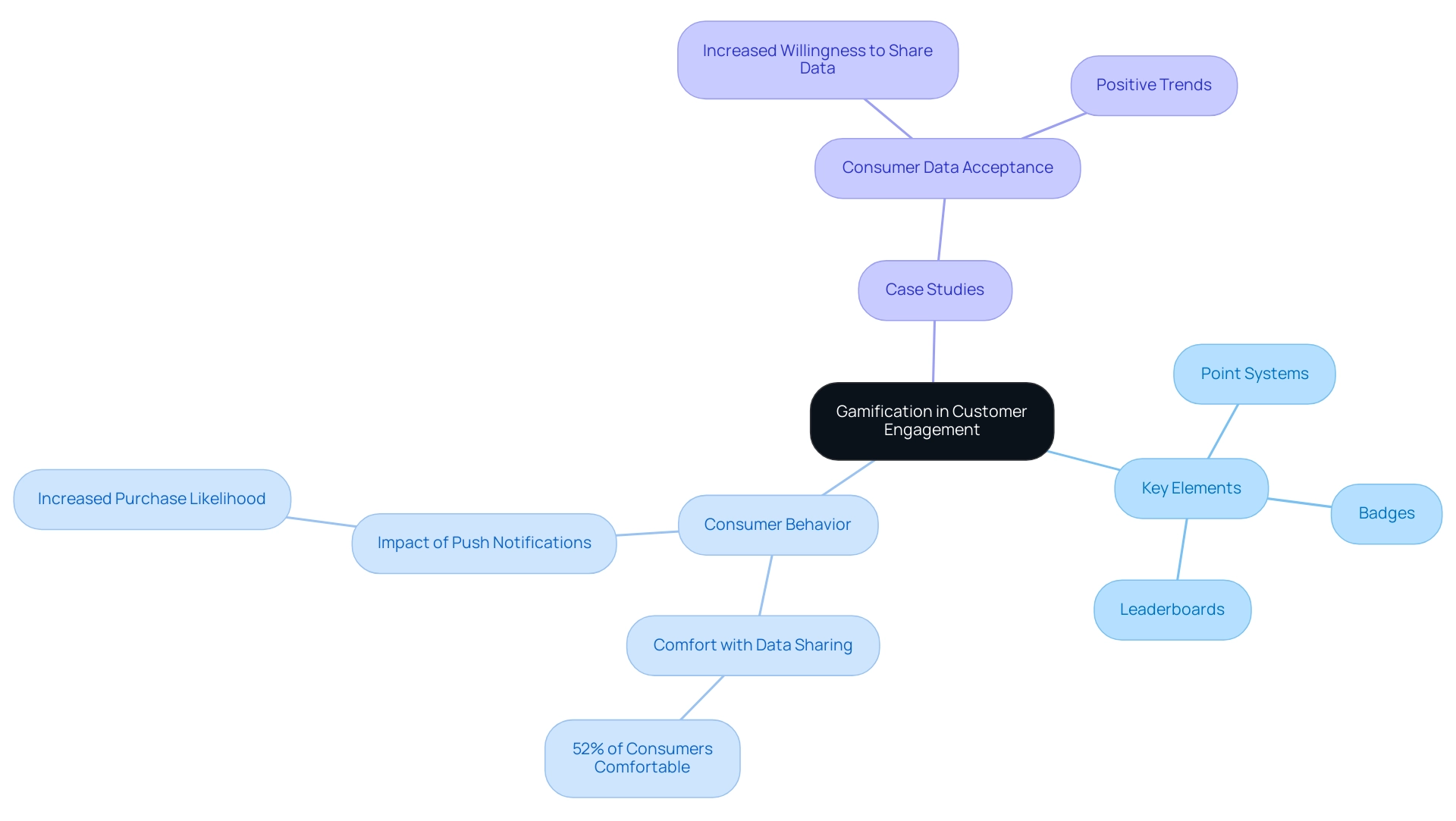Introduction
In a competitive marketplace where customer loyalty is paramount, businesses are increasingly turning to loyalty programs as a strategic tool to enhance retention and drive engagement. These sophisticated marketing initiatives not only reward repeat customers but also create emotional connections that can significantly influence customer lifetime value. As companies navigate the evolving landscape of consumer preferences, understanding the key features and promotional strategies of successful loyalty programs becomes essential.
From personalized rewards and tiered systems to the integration of gamification and social media campaigns, businesses must adapt to the latest trends to foster deeper relationships with their clientele. As we explore the intricacies of loyalty programs, it becomes clear that investing in these strategies is not just about retaining customers; it’s about building a community that propels long-term profitability and success.
Understanding Loyalty Programs: Definition and Importance
Loyalty initiatives are advanced marketing tactics created to encourage repeat transactions by rewarding patrons for their ongoing support. These initiatives play an essential role in enhancing client retention, a crucial aspect since keeping clients is notably more economical than gaining new ones. Statistics indicate that resolving a client's problem during their initial engagement can avert 67% of churn, underscoring the importance of effective retention strategies.
Furthermore, reward systems greatly affect client lifetime worth. By nurturing emotional ties, companies can more effectively customize their products to meet customer expectations, improving satisfaction and brand commitment. Significantly, 68% of women in the U.S. engage in rewards initiatives, with the highest involvement among those aged 55 to 64, indicating a clear demographic trend.
Our tailored e-commerce solutions, such as personalized rewards systems and targeted marketing campaigns, backed by over 20 years of global experience, have a proven track record of enhancing critical KPIs. Successful case studies further illustrate the benefits of customer retention programs. For instance:
1. Acquiring new customers is five times more expensive than retaining existing ones.
2. Even a modest 5% increase in customer retention can lead to substantial revenue growth.
This highlights the tangible impact of effective customer retention strategies.
Experts highlight that consumers often modify their spending behaviors to maximize reward points, showcasing the strategic advantages of well-structured systems. By comprehending and utilizing client preferences, businesses can foster a sense of community, thus driving long-term profitability through increased allegiance and referrals.
As we transition into 2024, it is crucial to reflect on emerging trends in reward systems, such as the growing incorporation of technology and personalization, which are transforming how businesses interact with their clientele. Tailored solutions that incorporate these trends will not only enhance user experience but also align closely with community values, reinforcing the connection between businesses and their clientele.

Key Features of Successful Loyalty Programs
Successful engagement programs in 2024 are defined by several key attributes that enhance participation and retention. Notably, tiered rewards systems play a crucial role in encouraging increased interaction with the brand. By providing increasingly valuable incentives as clients advance through various reward tiers, businesses can cultivate stronger client dedication. For example, a retailer might offer a basic tier with a 5% discount, while higher tiers provide exclusive access to events or 20% discounts, significantly enhancing engagement as individuals are motivated by the prospect of attaining these higher rewards.
Personalized offers represent another vital component of effective loyalty programs. Utilizing client data analytics, businesses can customize rewards to individual preferences. For instance, an individual who frequently purchases athletic gear might receive exclusive offers for new sportswear lines. Statistics suggest that 44% of US consumers remain loyal to brands that actively involve them in designing or co-creating services, underscoring the importance of personalization.
Mobile integration is also crucial in contemporary reward systems. By incorporating reward features into mobile apps, businesses provide customers with convenient access to track benefits, receive personalized offers, and make purchases. Successful implementations, like Starbucks’ app, enable users to pay, order in advance, and receive rewards smoothly, enhancing user experience and boosting participation.
Additionally, clear communication regarding membership benefits is essential. Research indicates that almost half of users do not comprehend if an app is linked to their loyalty scheme. Therefore, ensuring that clients are well-informed about how to utilize these services can significantly enhance engagement and satisfaction.
As Bain and Company highlights, 'A client is four times more likely to switch to a competitor if the problem they're having is service-based.' This statement highlights the necessity for businesses to prioritize outstanding service within their customer retention strategies to prevent customer churn and maintain competitive advantage.

Promotional Strategies to Enhance Loyalty Program Engagement
To boost customer engagement in their initiatives, marketers should adopt a multifaceted strategy that includes:
- Social media campaigns
- Email marketing
- Influencer collaborations
Social media platforms are essential for promoting reward programs, allowing companies to connect with their target audiences through engaging and shareable content. Expert views emphasize the important function of social media in enhancing user engagement and cultivating brand allegiance. Importantly, incorporating diversity and inclusion in these strategies can lead to more relatable and effective campaigns, appealing to a broader audience base.
Email marketing remains a cornerstone of effective promotional strategies. According to recent data, 60% of consumers make purchases influenced by marketing emails they receive. This emphasizes the effectiveness of well-designed email campaigns in informing current customers about benefits, special promotions, and exclusive offers. For instance, a recent case study showed that a global retailer increased their membership sign-ups by 40% through targeted email campaigns that highlighted inclusive messaging and diverse product offerings. The success of MailChimp, which generated over $800 million in 2020, showcases the potential of email marketing when executed strategically. Calculating the ROI of these campaigns is crucial, as it helps evaluate their success and optimize future efforts.
Influencer collaborations further enhance the reach and credibility of reward initiatives. Working with influencers enables brands to utilize genuine endorsements, motivating their followers to engage in reward initiatives. This approach not only enhances the initiative's visibility but also fosters trust and involvement among prospective clients.
Integrating these promotional tactics—while emphasizing diversity and inclusion—can greatly enhance engagement in the initiative, fostering both retention and long-term profitability. By employing a comprehensive strategy, brands can ensure that their engagement initiatives resonate with a diverse audience, ultimately enhancing their market impact.

Incorporating Gamification to Boost Customer Engagement
Integrating gamification into reward systems can greatly enhance participant engagement by fostering a more interactive and enjoyable experience. Key elements such as point systems, badges, and leaderboards serve as powerful motivators. For instance, customers can earn points with each purchase, which they can later redeem for exclusive rewards. Badges can mark significant milestones, while leaderboards foster healthy competition, encouraging participants to engage more frequently to climb the ranks.
Recent studies highlight the impact of push notifications, showing that they can significantly enhance the chances of purchases among loyalty scheme members. Additionally, a staggering 52% of American consumers express comfort with retailers knowing their purchase history if it results in rewards and discounts. This illustrates a trust in companies that can be utilized through well-crafted gamification strategies, as pointed out by Sprout Social, which mentions, 'Two-thirds of consumers feel that it’s important for organizations to take a public stance on social issues.'
Case studies further illustrate the effectiveness of these methods. For example, programs that utilize consumer data acceptance have shown a positive trend, with consumers displaying increased willingness to share personal data in exchange for tangible benefits. This heightened engagement not only enriches the customer experience but also strengthens the relationship between the customer and the brand. As industry experts highlight, gamification can be a pivotal strategy in modern e-commerce, driving loyalty and satisfaction.

Conclusion
Implementing loyalty programs is not merely a trend but a strategic necessity in today’s competitive marketplace. These programs serve as a powerful mechanism for enhancing customer retention, which is far more cost-effective than acquiring new clients. By understanding the importance of loyalty programs, businesses can foster emotional connections that significantly increase customer lifetime value, ultimately driving long-term profitability.
Successful loyalty programs are characterized by key features such as tiered rewards systems, personalized offers, and mobile integration. These elements not only motivate customers to engage more deeply with brands but also ensure that they feel valued and understood. Clear communication about program benefits is essential, as it helps customers navigate these offerings effectively, enhancing their overall experience.
Moreover, leveraging promotional strategies such as social media campaigns, email marketing, and influencer partnerships can further amplify engagement. By adopting a multifaceted approach that prioritizes diversity and inclusion, brands can reach a broader audience and cultivate a sense of community among their clientele. Incorporating gamification elements adds another layer of interactivity, making the experience enjoyable and rewarding for customers.
As businesses prepare for the future, adapting loyalty programs to reflect emerging trends and consumer preferences will be crucial. By investing in these strategies, companies are not just aiming to retain customers but are also building a vibrant community that supports long-term success. The commitment to understanding and engaging with customers will set brands apart in the evolving landscape of consumer loyalty.





